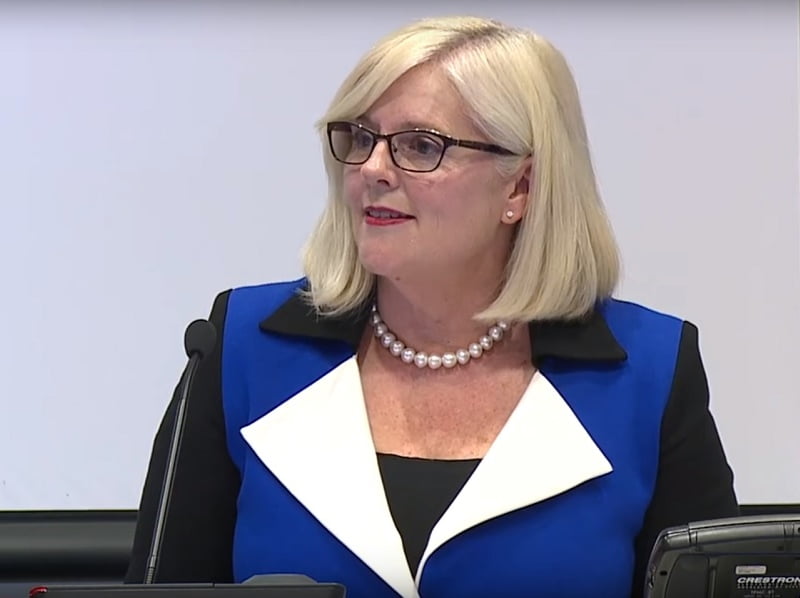The federal government’s new blockchain roadmap is “disappointing” and “lacks vision” according to blockchain adviser and FinTech Australia chair Alan Tsen.
Industry Minister Karen Andrews released the National Blockchain Roadmap late last week, outlining how the government planned to capitalise on the economic opportunities presented by blockchain technologies.
It includes a list of 12 initiatives to be pursued over the next five years, including a new steering committee, working groups and a focus on three specific sectors.

“The Morrison government has worked collaboratively with industry and researchers on this roadmap, which outlines what we can do together over the next five years to deliver benefits for our nation from blockchain technologies,” Ms Andrews said.
“Blockchain technology offers great potential to save money, initiate new business and export opportunities, boost economic growth and create new jobs. Governments and private industries all stand to benefit from embracing this technology.”
The government has focused on three key use cases for blockchain: agricultural supply chains in the wine sector, trusted credentials in the university sector, and transferable customer checks in the finance sector.
Under the roadmap, a full economic analysis will be conducted on each use case.
But Alan Tsen, who is also the former general manager of Stone & Chalk Melbourne, questioned the use cases presented by the government.
“Overall I found it a little disappointing. It lacked vision and really focused on use cases that felt like they’ve been written by a consulting firm space,” Mr Tsen told InnovationAus.
“Both the sections on the supply chain and university credentialing felt like blockchain tech was shoe-horned in – the classic ‘technology looking for a problem’ analysis that plagues the blockchain,” he said.
While the third case study, on Know Your Customer laws, is more useful, it may not be suited to blockchain, Mr Tsen said.
“I agree that there is a huge opportunity to reduce consumer switching friction in financial services by introducing a robust shared KYC / AML regime. To me this feels like a real sweet spot for government – the venn diagram of regulatory change already underway, Consumer Data Right and technology would seem to have a lot of overlap,” he said.
“Having said this, is it a problem that needs a blockchain? Personally I don’t think so.”
The three uses cases were selected by the government’s blockchain advisory committee, whose members include representatives from Data61, RMIT University and the industry department.
“The committee selected the three showcases to include in the roadmap. These showcases are not the only applications of blockchain technology, but they provide a selection of opportunities,” Ms Andrews told InnovationAus.
“The whole idea of a roadmap is to identify opportunities for expansion and ways for technology to be applied more broadly than it is currently. The first two selected showcase areas of agricultural wine exports and credentials are areas where businesses are already using blockchain technology in response to real business requirements.
“The last showcase area of know your customer checks is included to demonstrate a future potential use of the technology. Case studies provided throughout the roadmap highlight real world applications of the technology.”
The roadmap also cites a number of other sectors as opportunities, including legal, construction and government.
The roadmap also touches on the need for regulatory changes to support blockchain technology in Australia, with a focus on maintaining trust, ensuring security and balancing privacy and transparency.
But there needed to be more focus on regulatory issues, Mr Tsen said.
“The most disappointing element was the regulatory analysis. It hinted at a few areas that could be further developed but didn’t suggest how this could be done or what should be put on the roadmap of regulatory change,” he said.
In the report, Ms Andrews emphasised that it is just the beginning of the government’s efforts in the space.
“Blockchain is a technology with real potential to save businesses money and to open new business and export opportunities. It will continue to evolve over the coming years, and for that reason, this roadmap should be considered the start of the conversation between government, industry and universities on how we can all work together to move blockchain forward in Australia,” she said.
The blockchain roadmap released by the government is also at odds with advice provided by its own Digital Transformation Agency recently.
The DTA received $700,000 in the 2018 budget to investigate the technology, but was less than enthused by blockchain tech and ended up only spending a fraction of this budget on the project.
The agency told a Senate Estimates hearing that after its investigations it had discovered that “for every use of blockchain that you would consider today, there is a better technology”.
At another hearing early last year, DTA chief digital officer Peter Alexander also said that the agency did not agree with the concept of a roadmap focused on a specific technology.
“It’s always the wrong way to go to have a roadmap for the technology. What we need to see is a roadmap for solving the problems of Australians and Australian businesses,” Mr Alexander told a Senate Estimates hearing in April.
“We don’t need a technology roadmap to say here’s a series of technologies. We need to understand what they can do and engage with the public.”
The focus on blockchain is part of the government’s wider digital push, Ms Andrews said.
“The Prime Minister has also been very clear about wanting Australia to be a leading digital economy by 2030 and across government we’re laying the groundwork for that to become reality,” she said.
Do you know more? Contact James Riley via Email.

